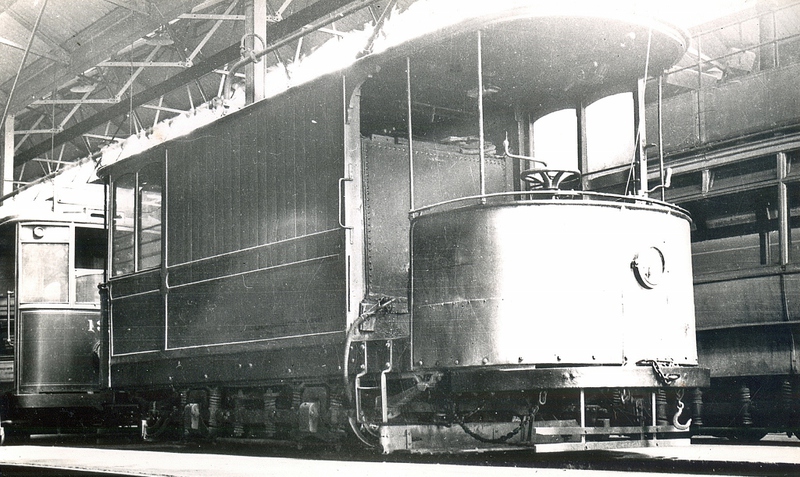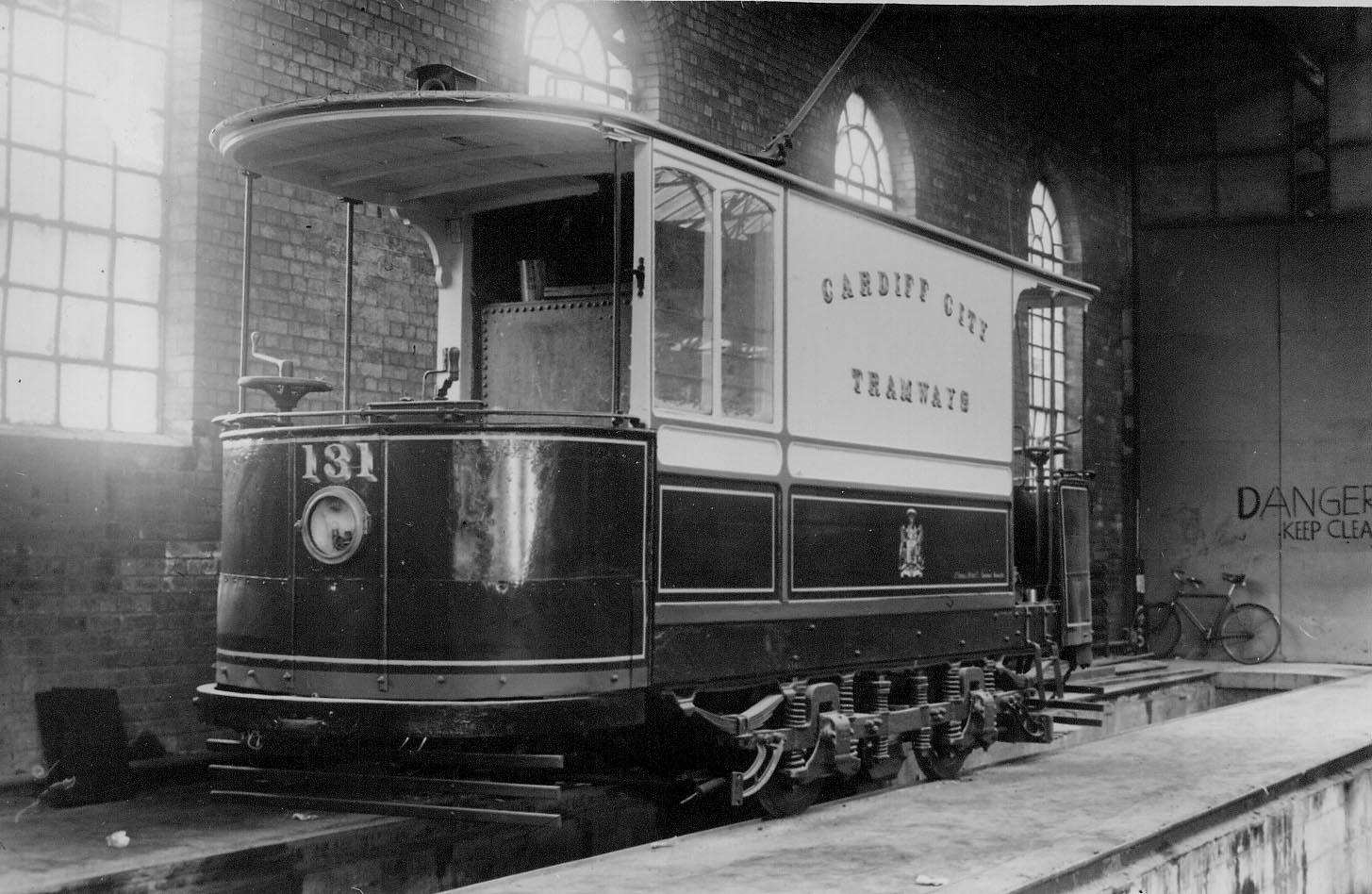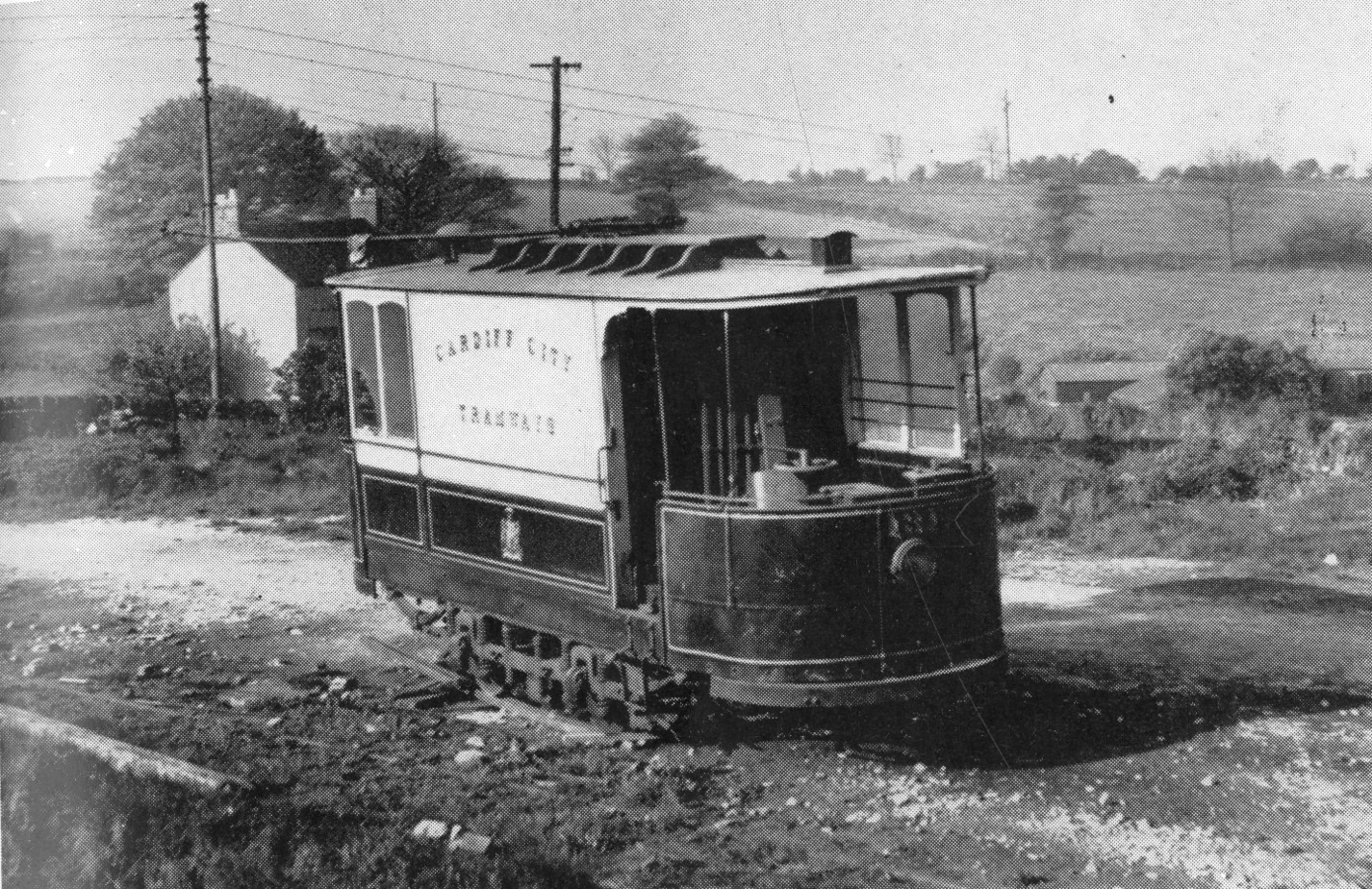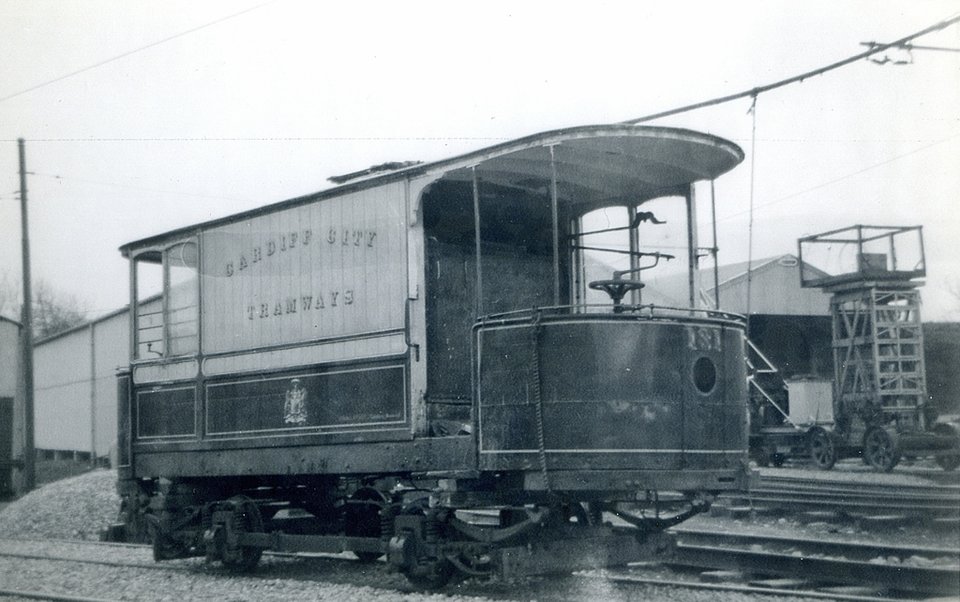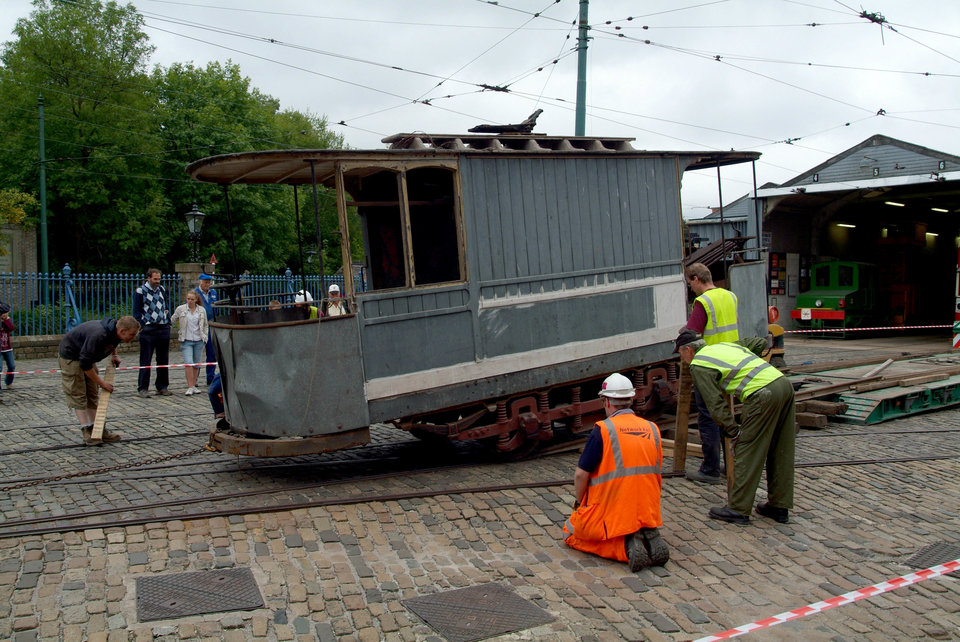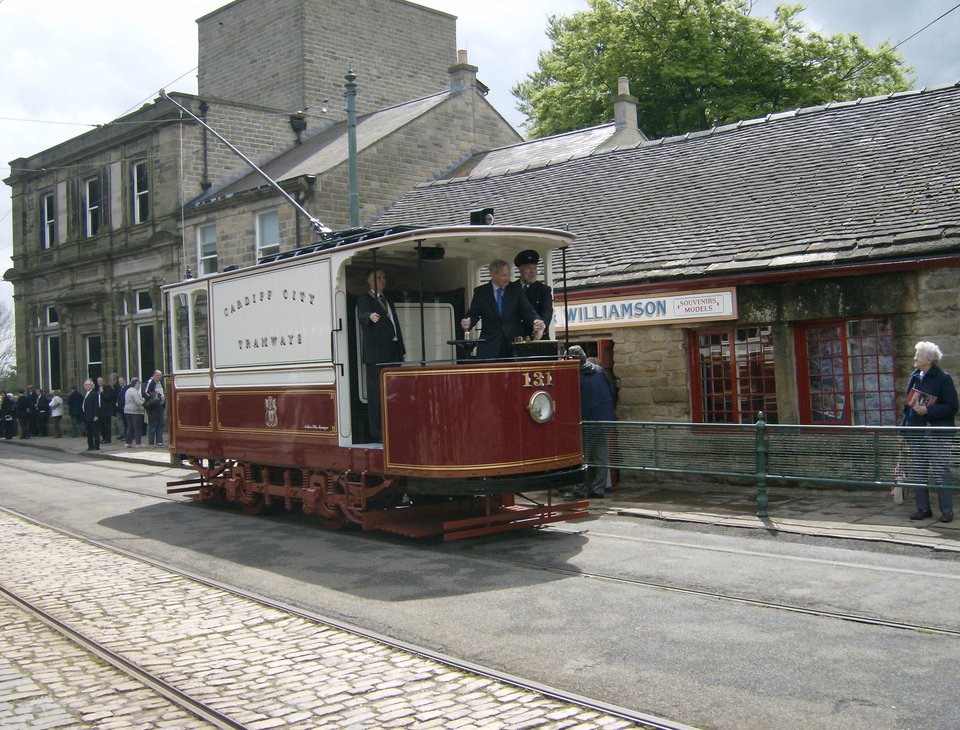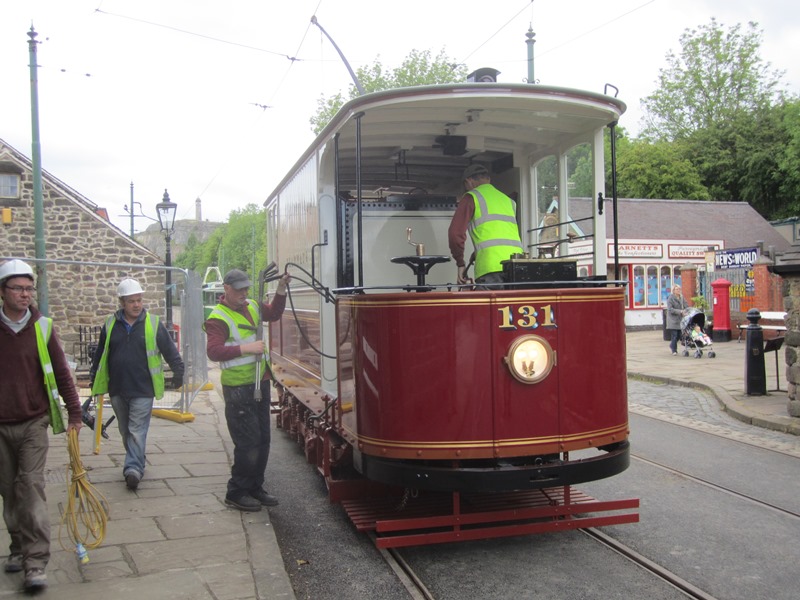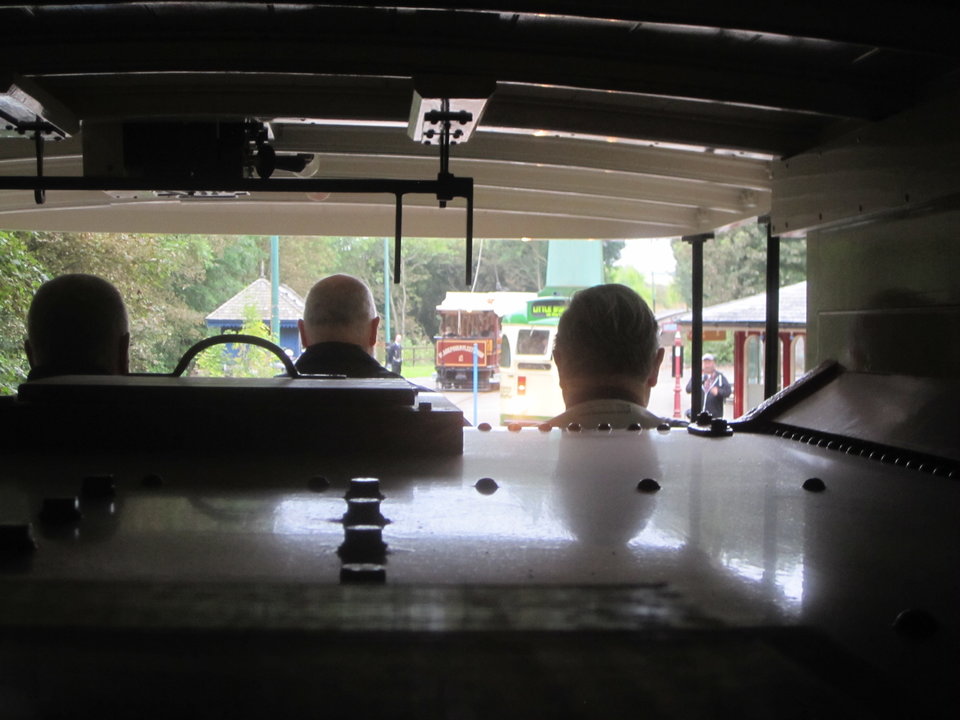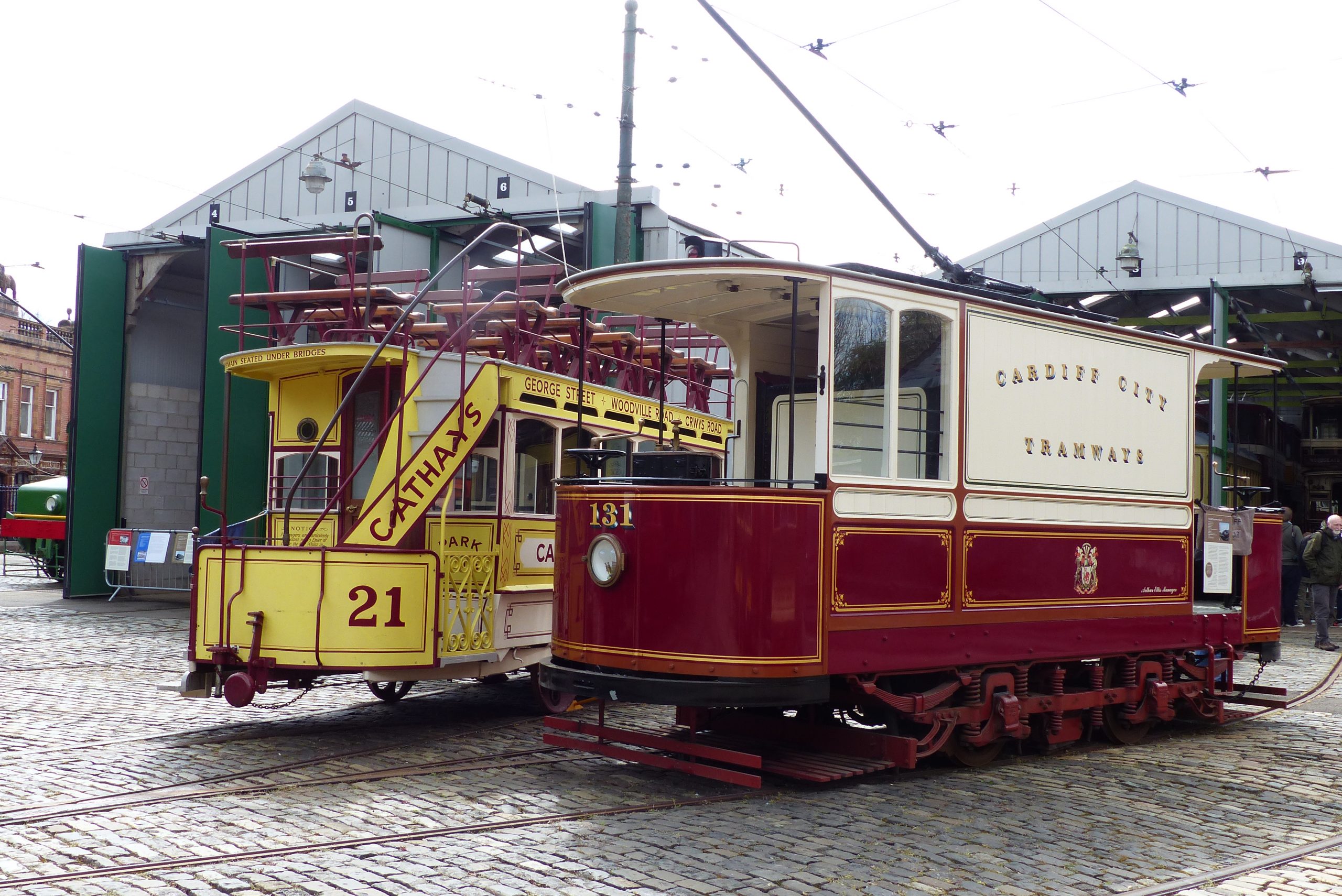Cardiff City Tramways No. 131
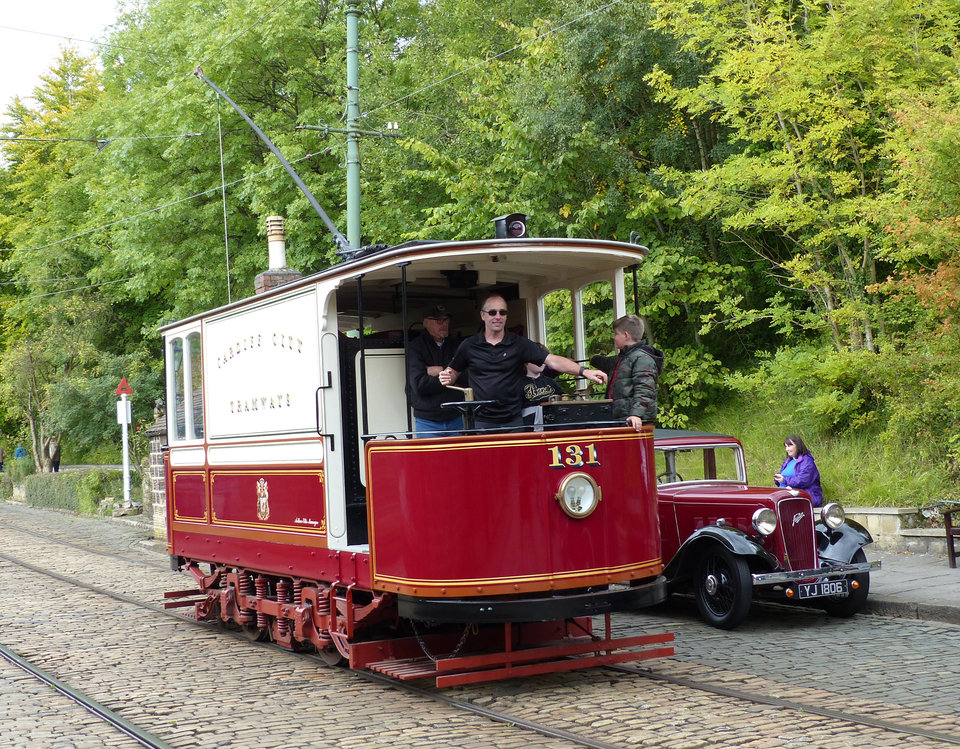
Photo: Jim Dignan
At the dawn of the electric tramway era, horses were still the predominant mode of traction for road vehicles and in London alone 300,000 plied the city streets at a time when the total number of motor vehicles in the whole of the country was just 17,000. Moreover, the state of the roads was often deplorable as the patent for tarmac, which involved the mechanical mixing of tar and aggregates to form a more durable weather-resistant surface, was not granted until 1901.
Not surprisingly, therefore, an abiding preoccupation for early tramway operators was the need to keep the streets reasonably clean to ensure that tramlines did not become completely blocked with mud and animal waste. An important weapon in their armoury was the water car and many operators found it necessary to incorporate at least one as part of their fleet even though – partly because of their unglamorous role, perhaps – only one was to survive into preservation.
This was built in Preston by the Electric Railway & Tramway Carriage Works as a 1000-gallon rail-cleaning car for Cardiff, at a cost of £600. It was delivered as a completely open car, with a central water tank, gaining the number 131 in 1905. By 1913 the tank had been enclosed, and in 1919 it was fitted with slipper brakes. At one time it was thought to have carried a revolving broom. From 1920 it was used for grinding out corrugations on the track around Cardiff, and it was also used to take the traffic superintendent home to Cathays after the day’s operations had been completed.
Specification
- Type of tram
- Works car (purpose-built water car)
- Livery
- Maroon and cream.
- Seating capacity
- N/A
- Date built
- 1902
- Manufacturer of body
- Electric Railway & Tramway Carriage Works of Preston
- Manufacturer of truck
- Brill 21E
- Gauge
- 4’ 8½”
- Motor
- GEC 200K 2 x 30 hp
- Controller
- BTH B510
- Current collector
- Trolley
- Modification
In 1913 the previously open sides were enclosed by matchboard panelling and a roof structure. In 1919, track brakes were fitted and, the following year, these were modified to take carborundum blocks, which enabled the tramcar to be used for rail grinding.
In 1947 its lifeguards were replaced by snow ploughs and the car was given replacement motors that had been salvaged from a redundant passenger tram.- Withdrawn from service
1950, on closure of the system.
- Subsequent history
Acquired for preservation on withdrawal
- Restoration history
It was preserved by members of the Light Railways Transport League, who overhauled it after its withdrawal, and repainted it back into the attractive livery of the Cardiff passenger trams. They arranged for its temporary storage in a variety of locations before its arrival in Crich in May 1959, the first tramcar to appear on site.
The car was painted in grey primer in 1968 and on 13th May 1971 it was moved to the museum’s off-site storage facility.
It returned to Crich in 2007 to enable a full restoration to be undertaken.- Current status
- Restored to operational condition. Commissioned for service as part of the operational fleet during the current season.
- Date started operating at Crich
- 2010. Has operated in 13 seasons, most recently in 2023.
- Total mileage covered at Crich
- 768
- Current location
- Depots
- 1902 – 1950Operational on original tramway
- 1950 – 2007In storage
- 2007 – 2009Undergoing restoration
- 2009 –Operational at Crich and elsewhere

